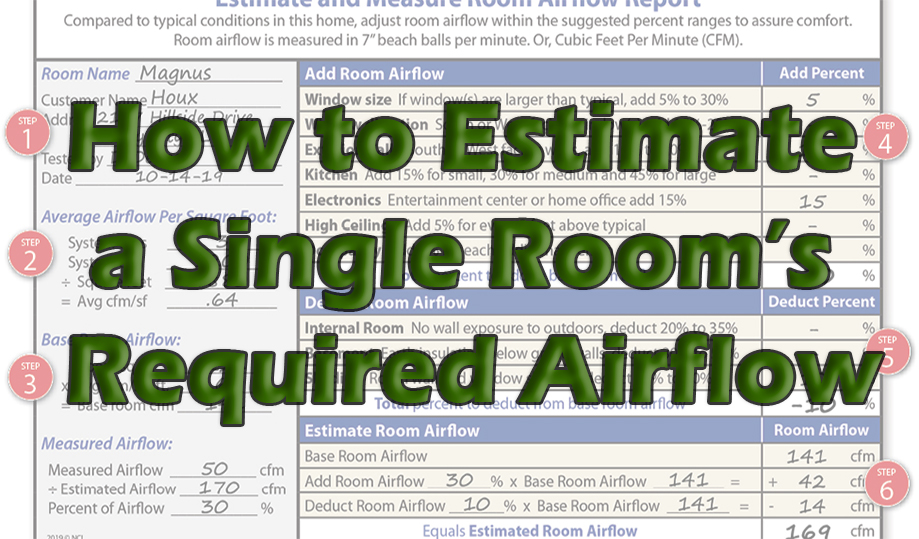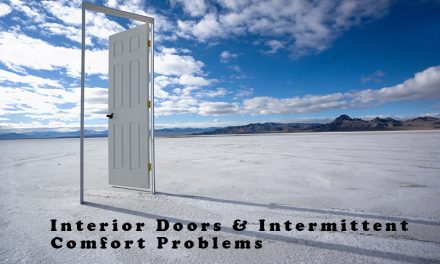Measure Room Airflow
Now that you both know room airflow should be 170 cfm or 170 beachballs per minute, you’re ready to measure the room actual airflow and diagnose it.
Invite your customer to use an air balance hood and measure airflow from the room’s supply register. In this example, the hood reads 50 cfm. Say nothing. Let your customers consider the new information about this room’s comfort.
When a customer participates in this process, they can’t help but contribute to the diagnostics. They may begin to diagnose the problem themselves!!
Finally, complete the report by entering the measured room airflow and calculating the percent of airflow. Divide the measured room airflow of 50 cfm by the room estimated airflow of 170 cfm to find only 30% of the needed airflow is delivered (50 cfm – 170 cfm = 30%).
As with any new diagnostic method, it will take practice to master it. You’ll learn better to engage your customers with experience also.
Estimating room airflow is a key element to diagnosing and fixing customer’s hot and cold room problems. Successfully resolving customer comfort issues in this manner sets you apart from the rest of your competitors, builds strong customer relationships, and really contributes toward improving your diagnostic skills.
Most new diagnostic tests require practice. First, estimate room airflow using this method at home or at the shop. Then go live with your customer. I’m confident you’ll be pleasantly surprised with the results.













Since I am NCI certified, how do I get this form for evaluating a clients home?
Hello Jason and thanks for your question — The form Rob Falke mentioned in his article is a “sneak-peek” of what we will likely share at our upcoming High-Performance HVAC Summit event, which is being held in Scottsdale, AZ from August 31 to September 3rd, pending the state of COVID crisis.
For more information on the Summit, point your browser to http://www.gotosummit.com.
Can we use this method in California?
Thank you Rob.
This works almost anywhere as a tool for estimating room airflow for diagnostics purposes.
However, as discussed earlier, a Manual J calculation is required for a residential project for code compliance documentation. For commercial projects, you’ll need a Manual N calculation for compliance.
This room airflow documentation rule is enforced differently in many counties and municipalities. So check with your local building department to be sure.
Posted on behalf of Curt Kinder (curt@greenersolutionsair.com) on December 19, 2019:
Hey Rob — Why would one “estimate a single room’s required airflow” when we have a most excellent tool to CALCULATE a room’s required airflow…Manual J?
Posted this reply from Rob Falke on December 19, 2019:
Hello Curt. Thanks for your question.
This estimating method identifies a single room’s airflow and then you can compare it to the room’s measured airflow. This diagnostic discovery test is used in the field to help a customer understand why they have a hot or cold room. At this point, there is no time or need for a full Manual J.
NCI recommends a full Manual J after testing and diagnosing the system. The manual J is compared to the measured delivered BTU of the system, then the equipment is normally downsized to match the required capacity of the home.
Hope this helps.